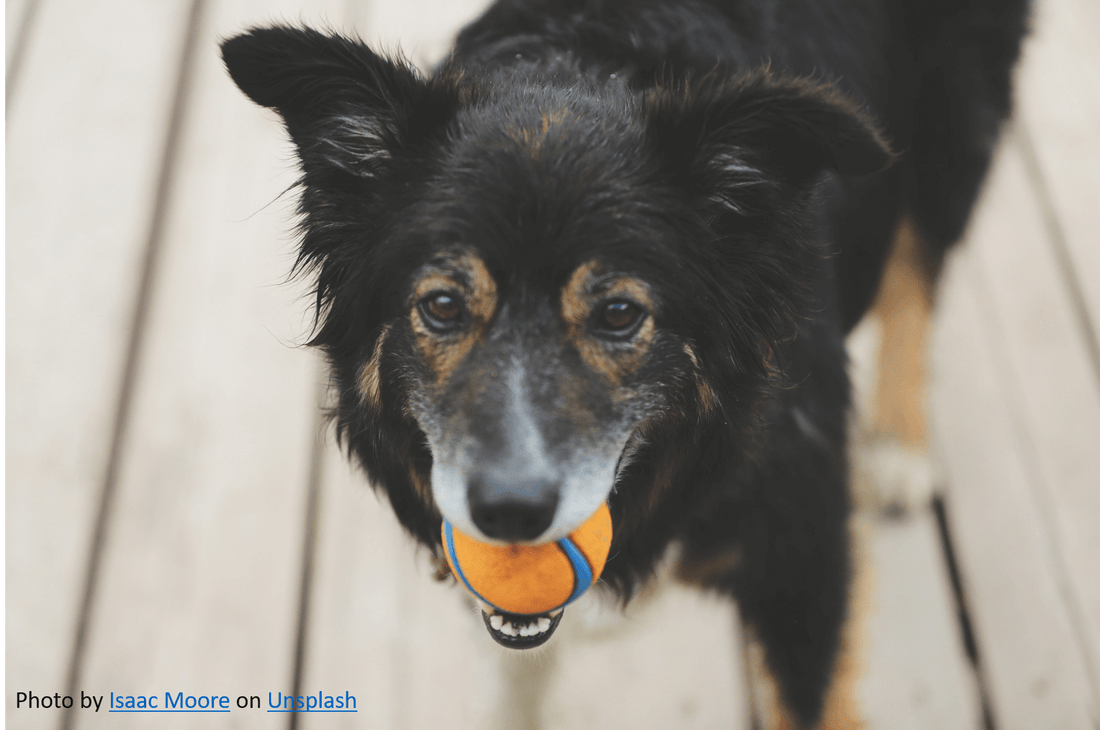Old Dogs. Training. Yup, those two can be a thing! And nope, we’re not crazy. A lot of dog owners give up on training their older dogs, figuring that ship has sailed. But training at an older age may not be a terrible idea: after all, your dog is still a heck of a lot more mature than they were in their wild puppy days,there’s a lot of resources at your disposal and it keeps them on their toes as they age.

To help, we’ve collected the best tips and tricks for coming out of this with a smile on your face—but remember, patience, patience, patience. This rule holds especially true for those of you who have just adopted an older pet. They’re adapting to a new family and new environment, and that takes time.
Go into this with a big heart, deep breaths and an open mind.
Begin as you mean to go
It’s all about habits, on your part and your dog’s. Before you start your training process, or bring your older dog home for the first time, consider how you want things to unfold. What do you want the day to look like? Are paws okay on your shiny leather sofa or is that going to drive you nuts? What about sleeping with you, table food, walking habits…you get the idea. If you want to see your dog behave, you must set boundaries from the get-go. This takes discipline and willpower, but those are small front-end investments for big long-term gains.
Let the crate be their refuge
Just because your dog may be older and larger, that doesn’t mean a crate is out of the question. Like any new pooch, you can’t watch them around the clock. Your crate will come in handy for those early days of training when you need to run errands, work outside or just take a break. And, it’s a haven for your dog—a secure, cozy nook to call his own. A win all around.

Go back to school
And by that we mean: send your dog back to school! There’s absolutely no shame in returning to the basics, and an obedience school or private instructor will do just that. They’ll teach your furry pal basic commands, socialization with both dogs and people, and get her back in the mode of learning. This can be a great strategy to couple with your own training or to accelerate their pace of learning.
Take note of unusual behaviors
Now, if you’re truly trying to teach your dog
new tricks, you’re probably going to have an easier time than changing old habits. So, if you’re experiencing a bit of stubbornness, that’s normal. But what you need to watch out for is canine cognitive disorder, also known as the “Dog Alzheimer’s”. Just like humans, older dogs may exhibit concerning signs that something is not right, like sleeping more than usual, disinterest in their toys or favorite activities, or acting confused (like barking at the wall). This is a real thing, and if you notice odd symptoms like this, alert your vet immediately. There are medications that may be able to help.
Take your training digital
(
Drum roll please). Yes, you can go digital—with the
Scollar app. It’s the training program that will go wherever you are—romping on your living room floor, the dog park, lazy days at the beach or in the middle of the night (when you may need some inspiration, or just a deep breath).
The best part: Scollar training tutorials are free, and they’re available for iOS & Android. Grab it now!


 To help, we’ve collected the best tips and tricks for coming out of this with a smile on your face—but remember, patience, patience, patience. This rule holds especially true for those of you who have just adopted an older pet. They’re adapting to a new family and new environment, and that takes time.
Go into this with a big heart, deep breaths and an open mind.
To help, we’ve collected the best tips and tricks for coming out of this with a smile on your face—but remember, patience, patience, patience. This rule holds especially true for those of you who have just adopted an older pet. They’re adapting to a new family and new environment, and that takes time.
Go into this with a big heart, deep breaths and an open mind.




